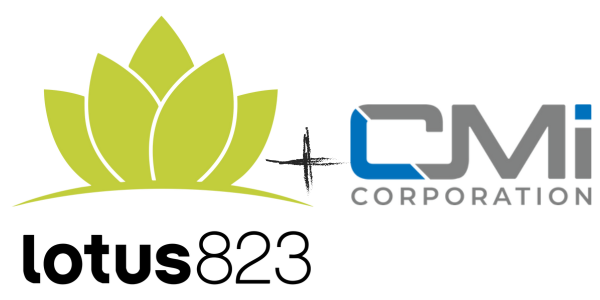One of the major social media marketing events of the year is #SMWF North America, presented by Social Media World Forum. The event is taking place from May 28-29 at 82 Mercer in New York City. Even though we’re not there in person, we wanted to share some highlights from Day 1 of the event.
“Embrace technology, but stay human. Curation is a craft & distribution is a science.” Not just posting & hoping it works. #SMWF @joshluger
— Kat Przybyła (@katprz) May 28, 2014
Next up was a panel talking about transforming fans into brand advocates. Here are some highlights:
- Juliana Stock of A+E Networks says you should make blogging about your passions part of your daily diet.
- Jordan Kretchmer, Founder and CEO of Livefyre, suggests searching to see what customers are saying about you if you’re starting from scratch on social media.
- Sean Gardner, Forbes #1 social media power influencer, claims that company culture is what happens when top brass leaves the room.
- Scott Lux of Diesel states that the company supports customers no matter what channel they buy their Diesel jeans from.
- Nick Ayres of InterContinental Hotels Group says that people are just happy to have a brands reach out and connect with them on social media.
Takeaway from brand advocate talk at #smwf. Know your goals, develop strategy, measure beyond vanity metrics (ie follower count).
— Mike Kurtz (@Mike_Kurtz) May 28, 2014
We feel that Sean Gardner put it best – everyone is an influencer of your brand, especially since his or her opinion can so easily be seen and shared on social media.
Up next was Brandon Rhoten of Wendy’s. He spoke about Wendy’s social media marketing strategy and said you should talk to people how, when, and where they want. He also claimed that the “build great content, the audience will come” theory is not true since Facebook sells ads now.
Wendy’s tactic – don’t be a jerk. No pop up ads, junk content, interrupting personal experience online #smwf
— Amanda Burkey (@A_Burkey) May 28, 2014
This is definitely an interesting and perhaps honest perspective on ads that caused a lot of discussion on Twitter. He said that you can’t just push out content, you also need to have a conversation with people, and that there are some brands people just don’t want to talk to. Other rules that Wendy’s follows are to stay current, make social a top priority, and focus on location and timing.
Ben Blakesley, author of Get Social, was up next, talking about steps to better customer interactions on social media. He stated that, “I’m sorry” is the most valuable phrase in social media. Actually caring about a response is much better than copy-pasting replies. You should talk to customers in the corresponding tone they’re using on social media. If they’re funny, be funny; if they’re sad, be empathetic.
You don´t own Social Media or your brand. You just own how you respond to people @benunh #SMWF
— Ezequiel Galli (@ezegalli) May 28, 2014
The next panel and presentation spoke about engagement in the growing “Pay to Play” social media environment. As social media advertising grows, companies are becoming smarter about how they spend their money through targeted options. Facebook has been at the center of it all with opinions swaying in both directions. Here’s some good advice if you choose to put money towards Facebook advertising:
Put dollars behind the metric that counts for you. Example, for @cwoodworth at @sonic, it’s shares. #smwf
— Hannah Bae (@hanbae) May 28, 2014
Companies that put money behind social posts are looking to drive product sales. Liberty Mutual’s Jenna Lebel says that if cost per engagement gets too high, they’ll turn off paid promotion on that piece of content.
Jan Rezab of Socialbakers says that social networks need to get back the social context. She also claims that interest in Pinterest and Vine has waned. Ben Blakesley says that Instagram is growing and is more of a pure social network than others.
JR Badian of MasterCard was up next and said that people are the one communication channel that brands cannot live without. Badian adds that we need to change from brand narrative to brand interaction and that we need to put people first in our marketing plans. He brought up one point that is really telling: Adobe claims that the influence of social media on sales is undervalued by 485%.
“70% of brands could disappear and consumers wouldn’t care” … there’s a #brand challenge! @jbadian #SMWF pic.twitter.com/xM4RhlsfRb
— Seona (@seonanotes) May 28, 2014
He also feels that people should stop talking about real-time marketing since everything is planned. With those plans, use marketing and mathematics to adjust the numbers according to the story that they tell. Two Marines talking social media wrapped up #SMWF North America Day 1. This might seem strange, but they claim that social is a great recruiting source for telling their story to millennials. They are also the largest government agency on Facebook. Lead by example is the strategy used to train recruiters on social media, so they can implement it locally. The Marines themselves become storytellers through branded content and one-to-one interactions. Transparency was a big priority for the Marines, previously seen as a very tight-lipped organization.
Lessons learned from the Marines, via @Raphaeleads at #SMWF pic.twitter.com/Rcqy896meo
— Hannah Bae (@hanbae) May 28, 2014
It seems that the common theme for #SMWF North America Day 1 is to spark a conversation with your audience on social networks. This should be the target of a campaign instead of or in addition to likes, retweets and shares. Here are some other notable social media tips and posts we saw from the show.
“We have over 500k followers on LinkedIn, yet haven’t published a single piece of content. Missed opportunity.” @twit_chat, @Novartis #SMWF
— Jenna Odett (@jodett) May 28, 2014
Great words from @ponderful on the power of Twitter. RT $twtr #smwf pic.twitter.com/BgbHrI5nnR
— Sean Gardner (@2morrowknight) May 28, 2014
“by 2018 digital ads will surpass television ads” #SMWF
— Alexandra Levy (@MissLevyNY) May 28, 2014
.@cquickster: With social, your company staff are brand ambassadors. Make sure they’re clear on what the company’s mission is. #socbus #smwf
— Hannah Bae (@hanbae) May 28, 2014
Watch to see what Google and YouTube are doing to help you define your SEO tactics, i.e. adding transcripts to YT videos. #SMWF
— Liz Dennebaum (@LizelleD) May 28, 2014
.@TanyaDonnellySE: Follow your gut, back up with data. #SMWF #socialmedia #data
— Sarah J. Glover (@skyphoto) May 28, 2014
.@Benunh: Look at competitors, look at what’s worked, create some similar content. #SMWF #socialmedia #data
— Sarah J. Glover (@skyphoto) May 28, 2014
@curiousbanker says encouraging employees to create @LinkedIn profiles is great way to spearhead internal engagement. #SMWF #socbus
— Michele Hoos (@michelehoos) May 28, 2014
Social provides a great environment for testing content. Seeing what works best, moving forward with that. Editing out what does not. #SMWF
— Kat Przybyła (@katprz) May 28, 2014
“The social consumer is becoming more sophisticated.” – @JuliaAQuinn #DigiMar #SMWF
— a.lee (@missalees) May 28, 2014
@CocaColaCo‘s @ebucherati says “graduate influencers to paid content producers” Influencer engagement/incentivization- the way to go! #SMWF
— Crowdster (@crowdster) May 28, 2014
Social listening: @Amtrak engages with passengers (content creators) & uses #socialmedia to amplify their message. @juliaaquinn #SMWF
— JWT Atlanta (@JWTatl) May 28, 2014
It’s about shifting creativity when you hit a speed bump. Love this analogy from @ryanshell to wrap up Day 1 here at #SMWF.
— Kat Przybyła (@katprz) May 28, 2014
What was your favorite moment from #SMWF Day 1? Let us know in the comments below!








